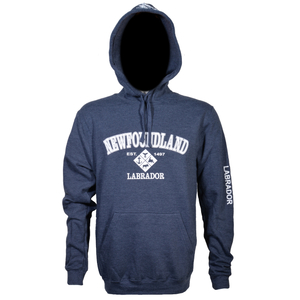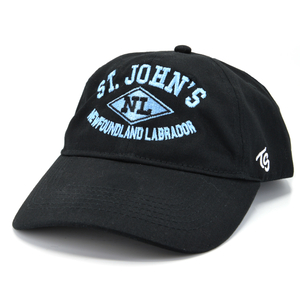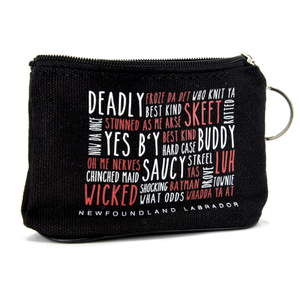By Andrea Maunder
If there was ever a pasta dish that was perfect for breakfast, it’s carbonara! It’s essentially bacon, eggs, “bread” and cheese. Traditionally, guanciale and Pecorino Romano – more on that later.
I’d been craving, and cooking it, a while back, so I had the ingredients on hand in the freezer. One morning, realizing I hadn’t eaten breakfast, I was thinking about what I could pull together quickly. I had no bread but wanted something breakfasty and substantial. I don’t know why I hadn’t thought of breakfast carbonara before.
I always have a variety of pasta in the pantry and a few eggs in the fridge. I make a habit of freezing perishable ingredients in smaller or easy-to-grab/thaw portions so I can make something delicious any time.
Here are some tips: Buy cheese in larger formats to save money, shred and freeze it in containers. Aged harder cheeses, such as Parmesan (Parmigiano Reggiano), Romano (Pecorino Romano) Asiago and Manchego, work exceptionally well because the lower moisture content keeps the shreds from sticking together, meaning you can pull out the container and pretty much grab a handful or two without having to thaw the whole container. Firm cheeses, such as Cheddar, Mozzarella, Swiss and Gruyere, shred well but can clump in the freezer, so it’s handy to package them in the size bags or containers you tend to use most. They don’t take much time to thaw, and I can poke enough loose with a butter knife for a smaller dish. I finely shred the harder ones and use the larger grater hole for the firm ones. I recently learned that manufacturers are coating their pre-shredded cheese with cellulose, which creates a mealy texture, especially horrible in sauces such as bechamel. It’s made from cotton and wood fibres. I avoid pre-shredded products.
The other gem in my freezer is a container of 1-ounce bags of diced guanciale (pronounced gwan-CH-YAL-eh). The traditional carbonara pork ingredient is cured, but not smoked, pork jowl. It’s not unlike Newfoundland salt pork, but rather than being all fat, it has a little meat streaking through. It’s hard to get locally. I scored some recently from my friends at Chinched Deli in St. John’s. I bought a pound and cut some into small dice, some into slices and froze, so I am set for a while. Other local butchers may cycle it in and out of inventory, so you can check with them. However, with guanciale being hard to find outside Italy, carbonara is often made with Prosciutto or Pancetta, cured but not smoked Italian hams, or even North American bacon (thick-cut if you can get it.) My preference would be pancetta because it usually comes in a chunk (President’s Choice sells packaged, diced!) rather than the prosciutto, which is usually sold thinly sliced.
Carbonara is beloved for its simplicity, but it can be a trick to get right. The gorgeous silky “sauce” forms when the egg and cheese hit the heat and come together to coat the pasta. Having enjoyed a beautiful rendition in a restaurant, most first-time at-home carbonara attempts result in scrambled egg and pasta, which is not the result we’re after. My plan for this column is to break down the steps so you can get it right the first and every time.
Carbonera is typically made with Pecorino Romano cheese, Pecorino meaning the Romano-style cheese is made from sheep milk. However, Parmesan or aged Asiago, made from cow’s milk, would work well too.
Some recipes call for whole eggs and some call for yolks. I prefer just the yolks for a richer and more stable sauce. Some recipes call for garlic cloves toasted with the pork and removed. I love that addition.
And although not traditional, I like a little lemon juice and chile – which, to my palate, add brightness and balance. You can choose to omit them from my recipe if you like. I always have a jar of oil-pack Calabrian chillies or cherry-peppers in my fridge. Chile flakes are a great substitute.
Though generally made with spaghetti, I love it made with thicker pasta such as linguine or bucatini. Thicker spaghetti with a hole right down the middle, like a straw, can be hard to source locally. I ordered from Amazon. I would avoid capellini (spaghettini or Angel hair) as it’s too delicate to hold the sauce.
Several techniques are important to achieving perfect, creamy carbonara. Be sure to whisk the egg yolk and finely grated cheese together well in a little bowl, and add them off the heat to the frypan after you’ve added the pasta to the cooked pork. This will keep the egg from curdling. Set the water to boil before you do anything. The pasta will take longer to cook than the pork. Pasta water is key, so you’ll be pulling it out of the water with tongs, not draining into the sink. And I like to warm my bowl so my meal stays warm.
Pasta carbonara for One (increase recipe for more people)
75-100 grams of spaghetti, linguine, bucatini or other long pasta. Bunched in your hand, it’s about the thickness of a quarter. Or if you have a pound package (454g) of pasta, you can estimate a portion by judging one-sixth to one-fifth of the package.
Salt for pasta water
1 ounce cubed guanciale, pancetta, prosciutto or bacon, about ¼ cup
1 minced oil-pack chile pepper, or a pinch of chile flakes
1 large garlic clove, sliced into 3-4 slices or a couple of small ones, halved (optional)
1 extra-large egg yolk, or 2 if your eggs are smaller
¼ cup finely shredded Pecorino Romano or Parmesan cheese
1 tsp fresh lemon juice (optional)
Plenty of freshly ground black pepper (8 or 10 cranks or a good 1/3 to ½ tsp)
A little extra cheese for garnish
A pinch of freshly chopped parsley, if you like, for garnish
Put hot tap water in your bowl to preheat and set aside. Set a pot of water big enough to boil the noodles on the highest heat. Salt very well. Pasta water should taste salty like the sea.
Place a medium-sized nonstick frypan on a cold burner. Dice the cured pork and place it in the pan. Mince the chile or add the chile flakes. Add the sliced garlic. Don’t turn the pan on yet.
In a small bowl, whisk the yolk(s) with the cheese. Add lemon juice if you like and plenty of fresh black pepper. Whisk until it gets a little pale and clumpy-thick looking, a minute or two. Chop the parsley and set aside.
When the water boils, add the pasta and cook according to package directions, usually 8-12 minutes. Give the pasta a couple of minutes head start, then turn on the heat under the frypan to medium and allow the cured pork to render. Be careful to adjust the heat and stir everything so the garlic doesn’t burn and the pork doesn’t overcook. If there’s a lot of fat in the pan, drain some out so there is about 1 tbsp left. Once the pork is cooked and fat drained, turn off the heat. Remove the garlic cloves if you like. I leave them in as I love the toasty pop of flavour. When the pasta is cooked, use tongs to transfer the pasta to the frypan. Add 2 tbsp pasta water to the frypan and toss. Remove the frypan from the heat completely. If it’s still sizzling, wait a moment. Then, working quickly with a silicone spatula or wooden spoon, add the egg-cheese mixture to the noodles-pork-pasta water and stir/toss to coat. It will come together in a creamy, shiny sauce that clings to the noodles. If it is too thick, add a little more pasta water, being careful to stir immediately or allow it to cool a few seconds if hot so the egg yolks don’t cook.
Dump the water from your warmed bowl, wipe dry and transfer your carbonara to the bowl. Garnish with a sprinkle of cheese and parsley, if desired. Dig in with a satisfied smile. You just nailed a notoriously tricky dish.









